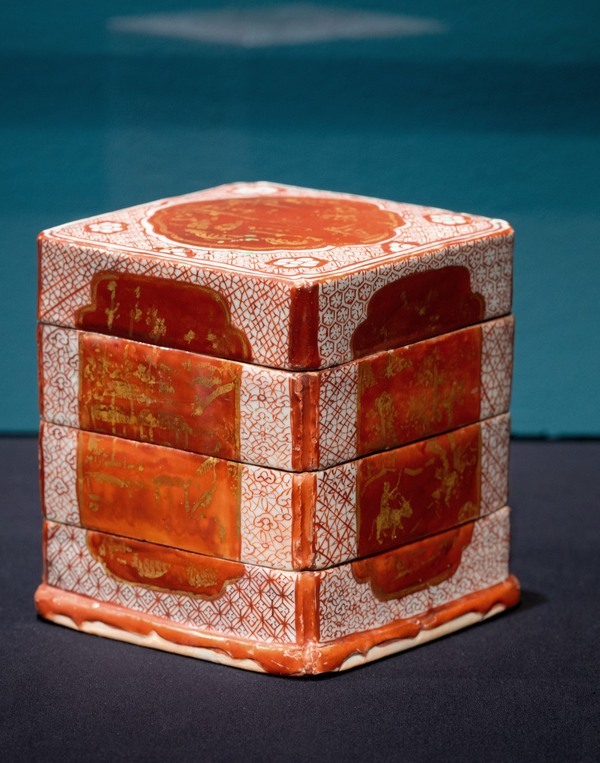Kinrande stacking box
Four-piece porcelain tiered box
What kind of sweet snacks were conjured up from this porcelain box from the 16th century? Would they have been as beautiful works of art as the stunning object they were stored in? In the period of 1500 to 1600, luxurious porcelain objects in kinrande style were often used during Japanese tea ceremonies. The colours were created after a labour-intensive process in which the porcelain was baked in a kiln several times. The decoration was then applied with gold leaf and polished. On the 4-piece porcelain stacking box from Jingdezhen in our museum, you can see decorations on all 4 sides with scenes of people in an outdoor landscape through geometric patterns and prunus flowers.
Kinrande porcelain was made in China for both the local and export markets during the Jiajing (1521 - 1567) and Wanli (1572 - 1620) periods. The main markets were Japan and the Middle East, especially the Ottoman Empire. Several pieces ended up in Europe via the Ottomans, mainly as gifts to rulers such as the Medici. The Portuguese and Spanish also brought kinrande porcelain to Europe aboard their trading ships, although the number of pieces was very small compared to the more familiar blue-and-white porcelain. Hence, kinrande items are very rare today. Only three such pieces are known worldwide, the other two being in private collections in Japan and Brazil. As such, this specific box is the only kinrande box in the world that is displayed in a public collection.

2.jpg?width=600&height=763&mode=crop&converttowebp=1)